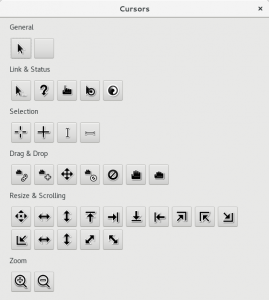In this last week, GTK+ has seen 26 commits, with 5081 lines added and 3618 lines removed.
Planning and Status
- Matthias Clasen released GTK+ 3.21.2, a development snapshot towards the 3.22 release.
- Timm Bäder rebased his image viewer widget branch.
- Carlos Soriano is working on a prototype path bar replacement to be used by both the file chooser and Nautilus.
- Matthias Clasen is refining the tab strip widget.
Notable changes
- The documentation has seen various improvements, notably in the CSS reference and the GTK+ 2.x → 3.x migration guide.
- Matthias Clasen added a section to the API reference that maps the release notes in the
READMEfile; this section will be used as the starting point for the migration guide from 3.x to future major releases of GTK+. - The
gtk-builder-toolutility, which allows to validate, simplify, preview, or inspect a UI description file now leaves theGtkDialog:border-widthproperty alone when simplifying the properties set to a default value.
Bugs fixed
- Bug 759037 – GtkInfoBar: documentation not updated wrt background colors and message types
- Bug 747206 – gtktextview: note on how to get line spacing between two paragraphs
- Bug 766643 – Frozen windows when unmapped with pending configure event
- Bug 766122 – Re-used filechooser displays $pwd half of the time when shown
- Bug 766878 – placesview: Do not mark icon name as translatable
- Bug 764203 – Default background color for the ‘textview border’ node
Get Involved
Interested in working on GTK+? Look at the list of bugs for newcomers and join the IRC channel #gtk+ on irc.gnome.org.

 ) or trek (
) or trek ( ). Unfortunately for us, this state of affairs was frozen into the GDK api with the
). Unfortunately for us, this state of affairs was frozen into the GDK api with the 